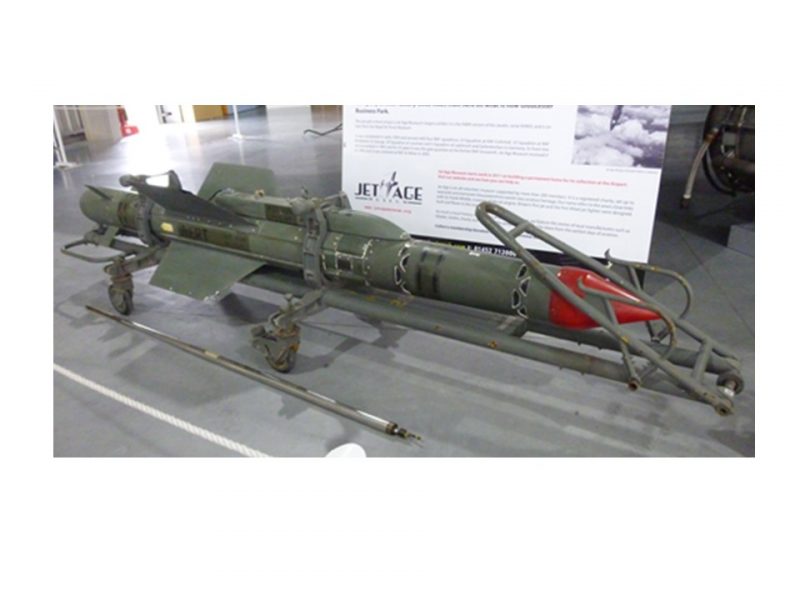Additional Exhibits
Meteor F3 EE425 Cockpit
The Gloster Meteor was the first and only operational jet fighter to actually enter combat in WWII for the Allies. Replacing the F1, the F3 had Rolls-Royce engines, a revised canopy style and increased fuel capacity.
210 F3’s were produced and were first introduced on the Belgian front in January of 1945 to intercept the Me 262, however by that time the Luftwaffe was sufficiently weakened that the F3’s never engaged the 262 in combat.
They were mostly used in reconnaissance and air-to-ground support activities.
This cockpit is from the third oldest F3 Meteor and was purchased and presented to the Museum by Richard Greenwood, the son of Eric Greenwood, Chief Test Pilot at Gloster Aircraft Company, 1945-1946.

Firestreak Missile
As used by the Javelin fighter aircraft, displayed on its handling trolley

Landing Gear Legs
Avro Shackleton and Vulcan main landing gear legs. Manufactured by Dowty Landing Gear.

Unibus Scooter
Just after the First World War, the Gloucestershire Aircraft Company diversified into the production of a motor scooter, which was marketed under the name of Unibus. Built at the firm’s Sunningend Works in Cheltenham in the early 1920s, the machine was designed by Harold Boultbee, who was an aircraft designer. A fine job he made of it too. The machine was one of the best and most advanced designs of that era. The Unibus on display at the museum is in working order.

Airfield Fire Cart
Probably manufactured before World War 2

Factory Clocking In Clock & Whistle

Pilot Display

Airborne Forces Display

Hispano Cannon

Turboprop

C130J Lockheed R391 Hercules Propeller
The propeller has a 13.5ft diameter.

Factory Gates
The blue gates at the entrance to the museum were once one of two sets of gates that guarded the Gloster Aircraft Company factory


